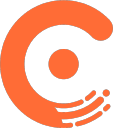On Developing An AI Powered Social Media Content Recommendation Tool
Hello! Who are you and what business did you start?
We are a team of three. This is my second venture. The first one was a tech company in the F&B space and got acquired by the largest digital products company in India. The other 2 co-founders are alumni of the prestigious Indian Institute Of Technology-Roorkee and have rich data science research experience and have participated and won various AI/ML competitions on global platforms including Kaggle and Analytics Vidhya.
Our flagship product is PredisAI. It is an AI-based tool that helps you write better social media posts and generate more engagement for them. This is done via our AI predicting how well will your social media post perform and also giving suggestions to improve it.
Our customer is anyone looking to improve their social media game and drive more engagement. As of now we only support Instagram and are targeting Social Media Agencies, Companies inhouse social media cells, and Influencers.
We are a pre-revenue startup and currently have 50 daily active users.
The unique thing about us is that All current Social Media tools are post-facto. They either help in scheduling or show like/impression-based analytics...

Download the report and join our email newsletter packed with business ideas and money-making opportunities, backed by real-life case studies.

Download the report and join our email newsletter packed with business ideas and money-making opportunities, backed by real-life case studies.

Download the report and join our email newsletter packed with business ideas and money-making opportunities, backed by real-life case studies.

Download the report and join our email newsletter packed with business ideas and money-making opportunities, backed by real-life case studies.

Download the report and join our email newsletter packed with business ideas and money-making opportunities, backed by real-life case studies.

Download the report and join our email newsletter packed with business ideas and money-making opportunities, backed by real-life case studies.

Download the report and join our email newsletter packed with business ideas and money-making opportunities, backed by real-life case studies.

Download the report and join our email newsletter packed with business ideas and money-making opportunities, backed by real-life case studies.



























